
Illustration by Doug Chayka
In urban Germany, a quiet revolution is taking place. Walk down a street in most cities and you will be struck by the number of small, black panels that festoon the balconies of the apartments there.
These panels, about the size of a large television screen, are portable, plug-in solar units. Their popularity has arisen from the fact that they need no specialist installation, nor, in many cases, planning permission. If you can hang a plant holder from your railings, then you are likely technically adept enough to fit these panels which then simply plug into your power sockets.
Germany, one of the countries hit hardest by the boycott of Russian fuel, in 2022 set itself an ambitious target of quadrupling its solar power generation by 2030. In 2023 alone, according to the Federal Network agency (the country’s solar power regulator), generation had grown by 10% – of which two-thirds came from these micro installations.
This is all the more remarkable since each panel only has 300MW potential. But their popularity – by the end of 2024, about 1.5m had been sold – has led to the creation of a new compound noun: Balkonkraftwerk (balcony power plant).
Aside from the ease of fitting, the (unusual) lack of regulations, the chance to take part in re-greening the country, as well as saving a few euro in energy costs, part of the attraction of these DIY panels is the cost. A full kit including fixings and diverters costs about €400 which, in Germany, should see the initial outlay repaid in about five years.
Unsurprisingly, on the back of their success in Germany – not a country associated with limitless sunshine – the manufacturers are targeting other European countries, particularly around the Mediterranean. The UK government has also announced a ‘solar roadmap’ plan, which could permit the plug-in solar panels.
While Germany has set a very high solar generation target, the EU wants to achieve 42% of its energy requirements through solar by 2030.
Undoubtedly the slew of regulations and the sheer size of regular solar panels have been a disincentive to many, particularly those who – as most urban Europeans do – live in apartment blocks where the roof is a shared commodity and solar panels would, first, require a mandate and, second, in larger blocks, would be unlikely to produce enough power to make a significant impact on all residents’ bills.
But, like the Balkonkraftwerk, there are a raft of products emerging as alternatives to traditional, roof-mounted panels. “There are limitless options with solar,” says Bill Jones FRICS, who has worked in the solar industry. “You can have something quite small and local that just feeds into the home or office. The problem is trying to get the cost down to make [purchasing them] effective.”
There is a rising tide of buyers, however, who are acquiring solar technology not so much to save money, but to contribute to the decarbonisation of the energy sector. So, what is available?
Solar roof tiles
If the look of solar panels is a major disincentive, solar tiles are an option. They come in a variety of traditional roof tile styles and can mimic the real thing very effectively. There have even been examples of these tiles being used in areas of historic interest such as solar “slates” on part of York Minster in the UK, and terracotta tegole installed on a building in Pompei. Roofs are the ideal place for solar generation, inherently carrying less of a risk of overshadowing and (generally) being beneficially pitched.
The tiles at this stage, however, are not as efficient as traditional panels (converting about 16% of sunlight into electricity on average, compared to panels’ 22%). And because the tiles need to overlap to create a weatherproof surface, meaning only part of the tile is an active cell, there needs to be a lot of them to generate much power.
The other drawback is their price – at least twice the price of panels, which is largely due to the labour costs of installation. Some types can only be installed across a whole roof span rather than mixed and matched among existing tiles.
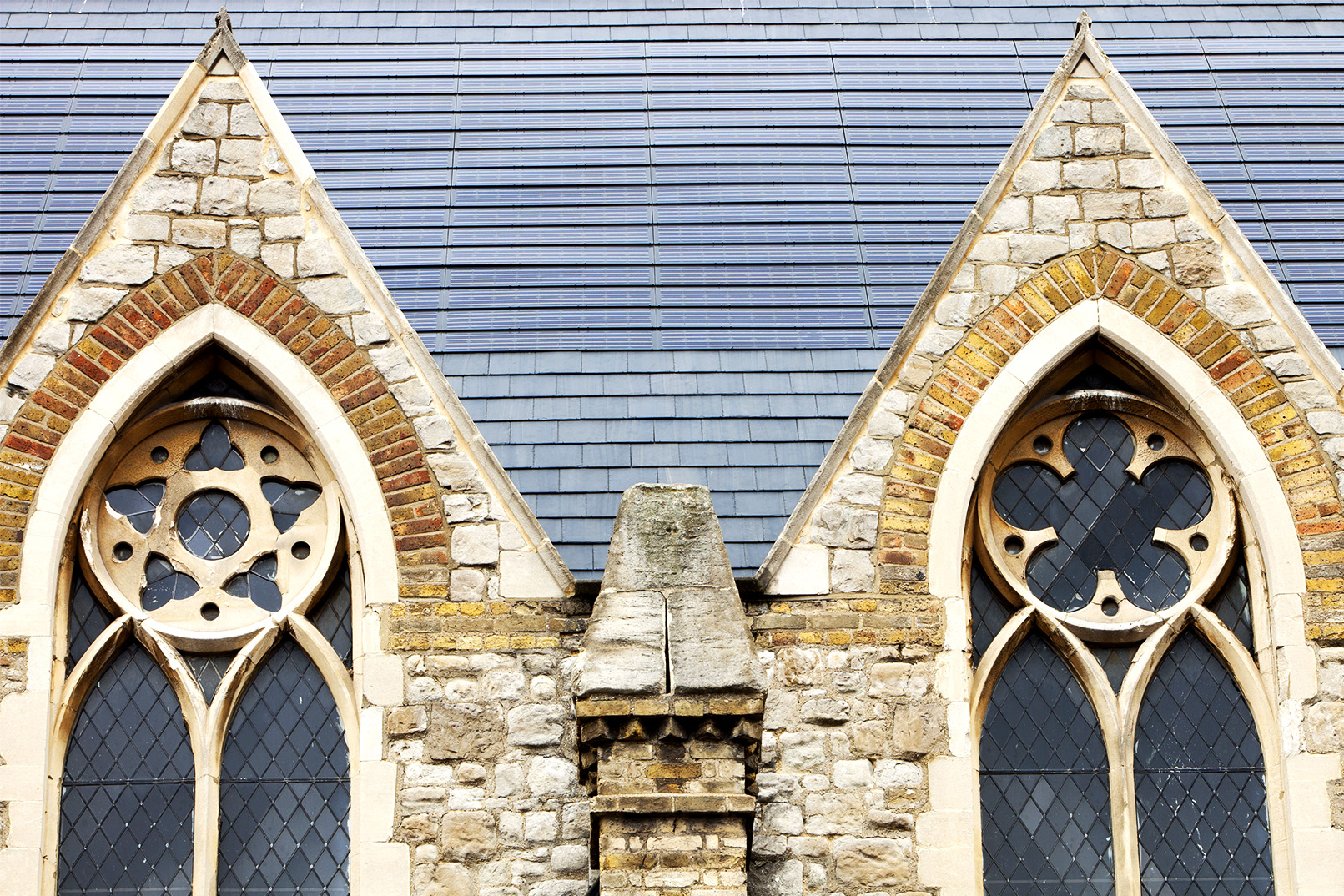
Solar tiles on St Silas's church in Pentonville, London
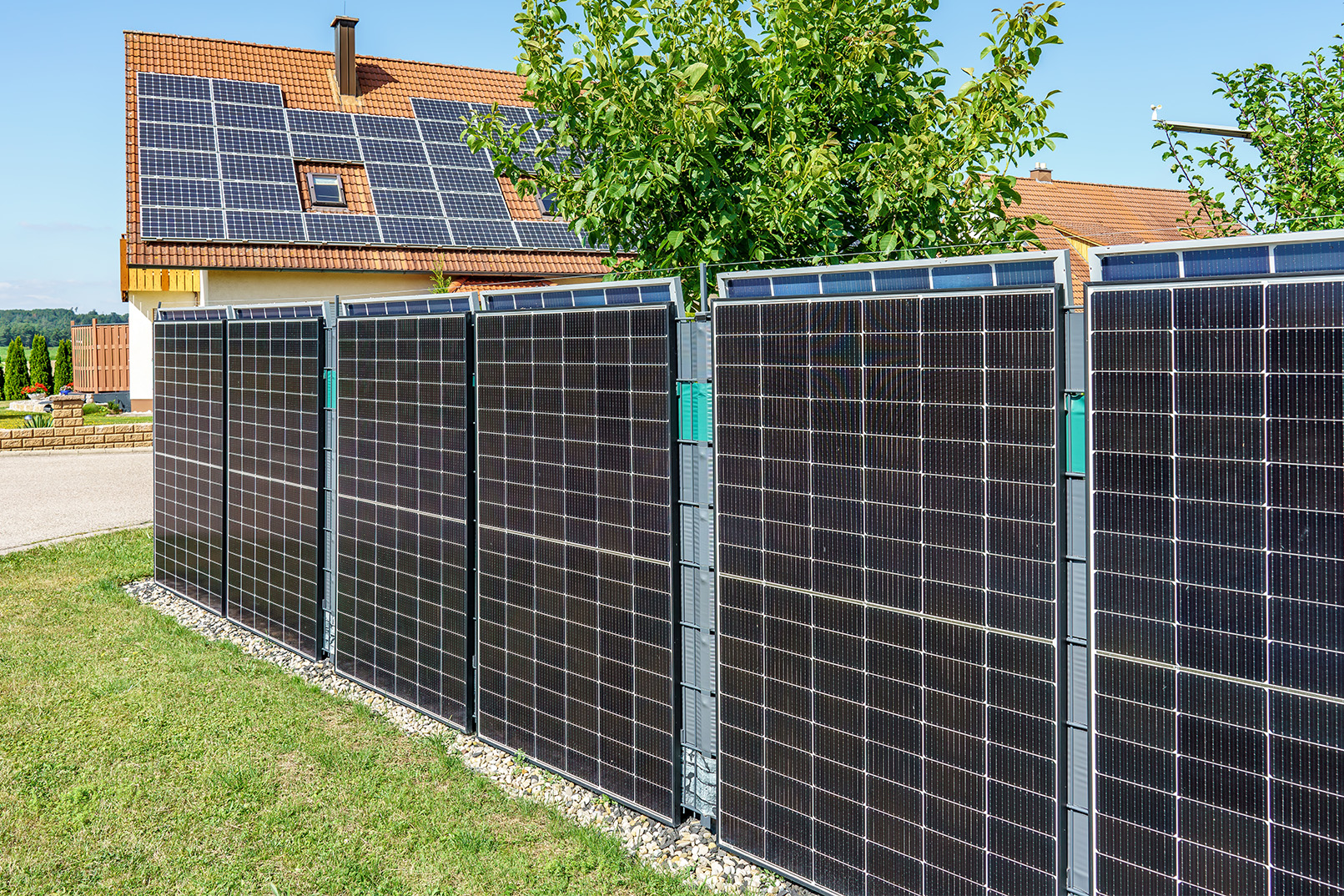
Solar powered fence
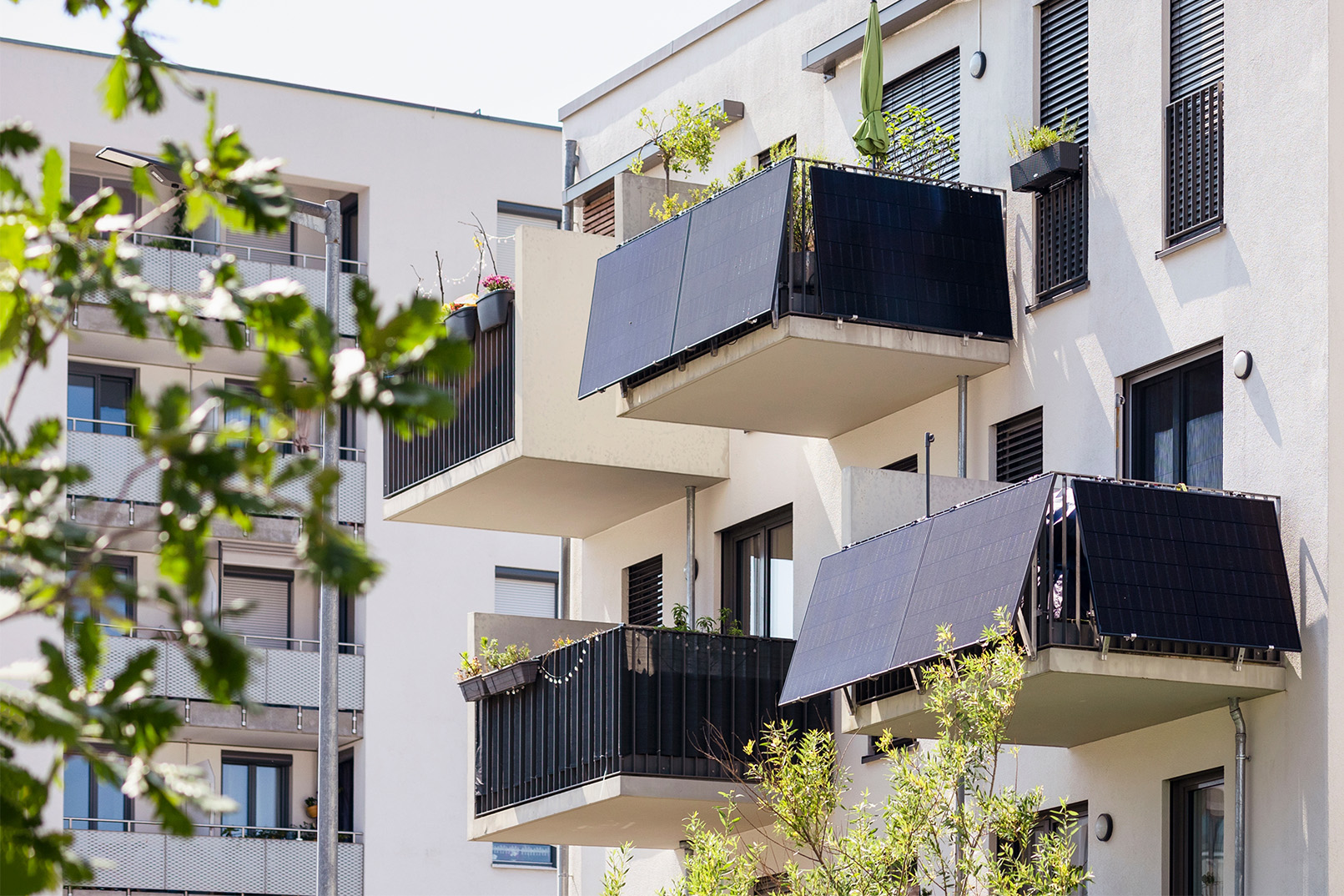
Solar panel balconies
Solar fences
These are straightforward fence structures with bifacial solar cells installed in their centre. This should ensure that the fences always have some sunlight upon them and, therefore, are always generating. They are also relatively simple to install and maintain, and take up what might be considered dead space.
However, most people do not wish to make a feature of their fencing and tend to grow plants or place sheds and outbuildings next to them – which would, of course, compromise their effectiveness. In a domestic setting, neighbours may not share a solar fence owner’s commitment to the environment and it isn’t always possible to control what happens on the other side of one’s boundary.
“The future of solar will be about everyday products powering their own needs” Bill Jones FRICS, SBM Management Consultants for Real Estate
Solar-powered vehicles
We are all familiar with electric cars, and solar-powered models take this one step further. Cells are integrated into the bodywork of the car and charge its engine, making the ultimate zero-emissions vehicle.
Developed initially for competing in solar car races, the technology has reached a tipping point where some vehicles are now commercially available – Lightyear and Aptera have both developed models and automotive giant Hyundai is incorporating a solar roof into some of its EV models.
The advantages of carbon-free travel are obvious and the prices for these cars are not extraordinarily high (a Lightyear 2 will be €40,000, slightly less than a Tesla). The difficulty will be obtaining one – the waiting lists are long – and, of course, the 500-mile range the Lightyear claims is only achievable in sunnier climes.
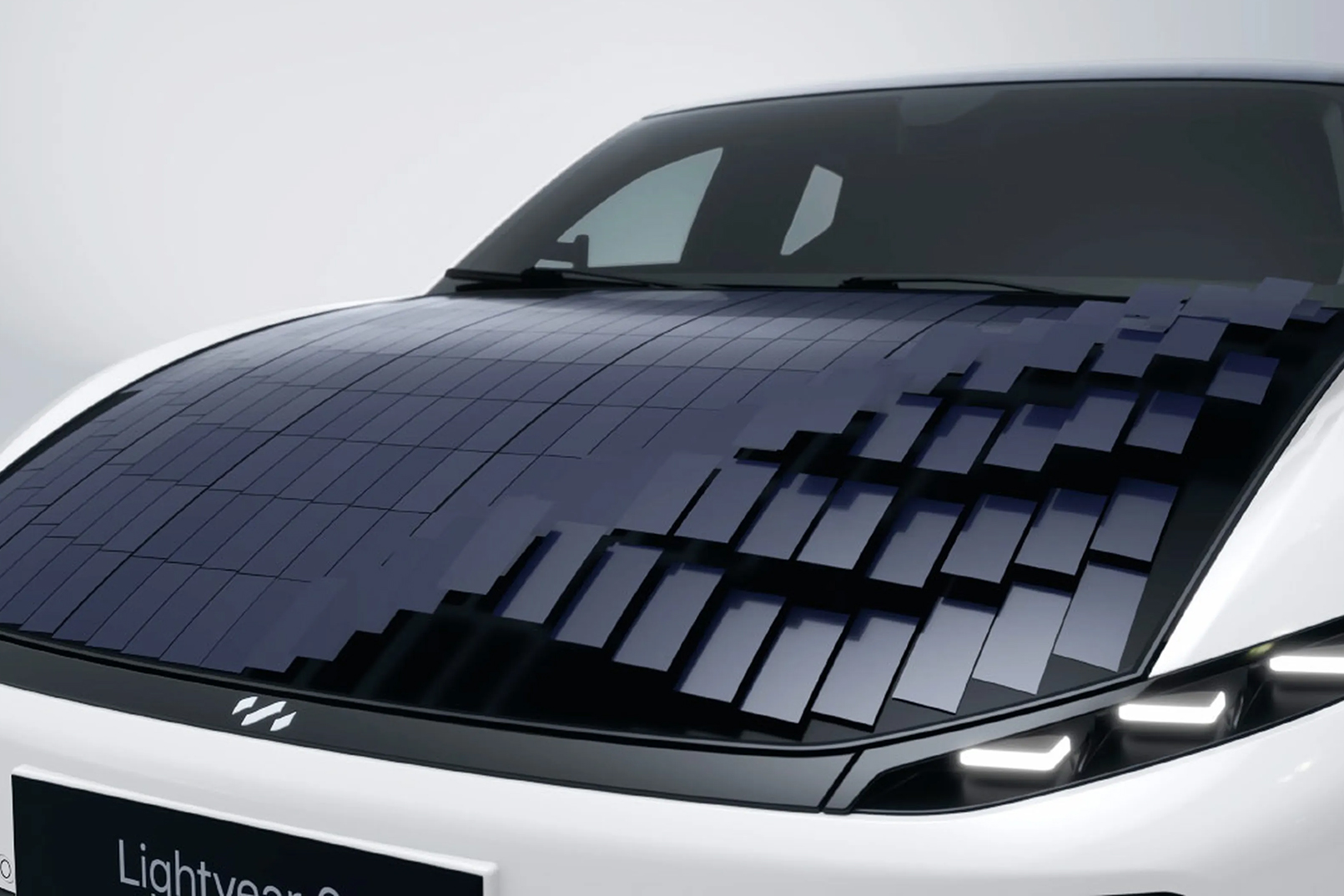
Lightyear 0 solar cells
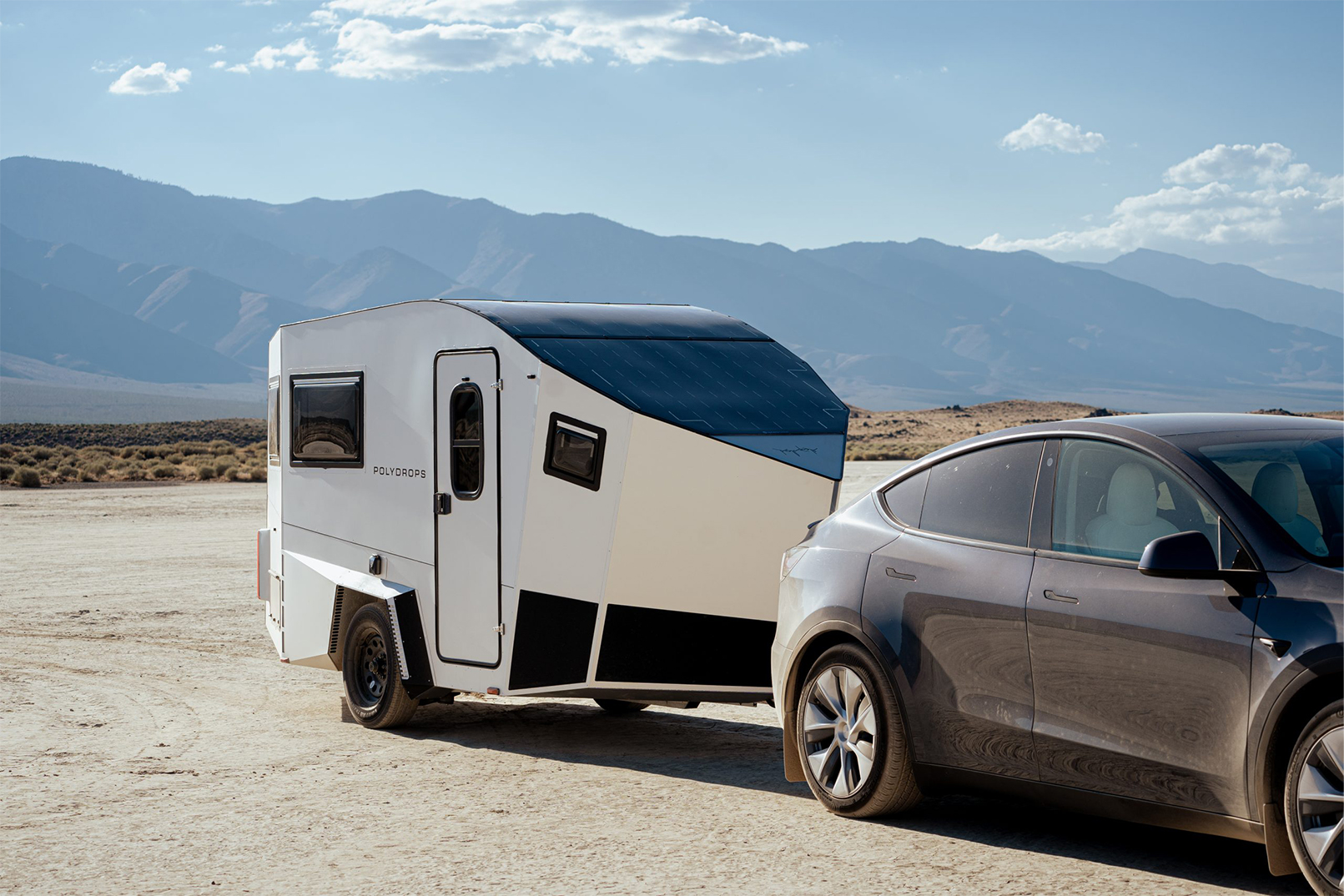
Aptera solar powered vehicles
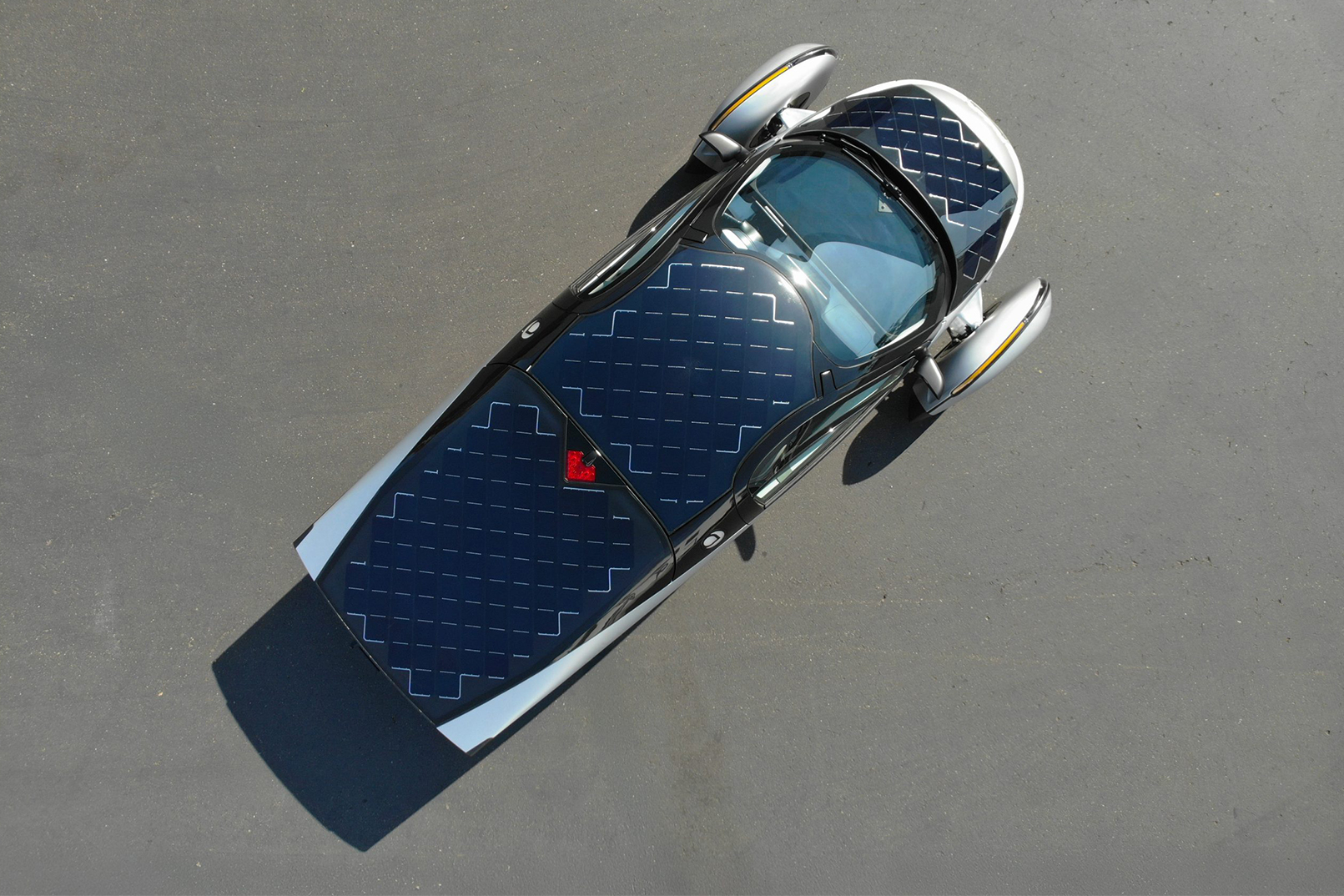
Aptera solar powered vehicles
Solar windows
They look very similar to normal windows but absorb the UV light that passes through them to generate energy. Furthermore, the tint that is inherent in solar glass prevents glare and helps to keep a room cooler – although many people prefer regular transparent glass.
Once again, the windows are unlikely to outperform roof panels but there is potential to have a greater array on a building than most roofs will allow and they will be easier to install and maintain. There is only limited availability at the moment, with prices starting at about £250/m2.
Solar paint
Not just one but three different technologies are being developed in the race to create solar paint which, as the name suggests, can be applied to a surface and generate energy.
- Perovskite solar cells have been developed to take liquid form.
- Quantum dots are microscopic semiconductors that the creators at the University of Toronto found to be 11% more efficient than traditional panels.
- Hydrogen paint uses solar energy to break down air moisture into oxygen and hydrogen molecules, harvesting the hydrogen for energy use.
The paints are a very long way from being commercially available, as their durability and scalability are currently under investigation. But it is hard to overstate how revolutionary they could be, transforming any building – any surface – into an energy generator.
“At a micro-generation level, I think the future of solar will be about everyday products powering their own needs,” says Jones. “Mobile phones could get built-in cells that charge the battery. Or we could build in cells to a building’s fabric, known as building-integrated photovoltaics (BIPV). All these new technologies can be done, just not in the short term.”


